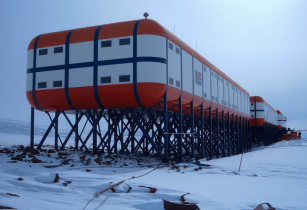XinaBox is leveraging space science to motivate students in high schools across South Africa to pursue STEM careers
In February 2020, XinaBox partnered with the USA-based organisation Quest for Space to launch experiments to the International Space Station (ISS). The XinaBox experiment was launched towards the ISS on 7 February 2020 with the XK92 xChips – Xinabox’s kit for the ISS mission.
The kit was onboard the unmanned Northrop Grumman NG-13 Launch Vehicle from National Aeronautics and Space Administration’s (NASA) Wallops Flight Facility in Wallops Island, Virginia.
In 2008, Bjarke Gotfredsen and Judi Sandrock founded Meta Economic Development Organisation (MEDO) – a South African non-profit development organisation implementing bespoke entrepreneurship and secondary level STEM education programmes. Their initial target was to leverage space science to motivate students in high schools across South Africa to pursue STEM careers.
To improve safety for the students while fast tracking the process to complete experiments, the company developed various xChips modules that are sold under the trading name Xinabox. Pronounced "X-in-a-box", the company was formally established in 2015 by Bjarke, Judi and Daniel Berman with its home base in South Africa while being registered in Ireland and the USA for patent and distribution purposes.
xChips are a modularised set of computer chips that can be used to make a weather station, satellite or even a rocket. The components are plug-and-play and can be reused for different applications in the rapid development and prototyping of products as well as STEM type experiments at a school and university level.
The range of xChip modules from XinaBox encompasses processor boards, cores, sensors, power, communication, output, control and storage devices; as well as a variety of supporting functions including LoRa, Bluetooth and WiFi, OLED displays, capacitive touch sensing, proximity sensing, temperature sensing, humidity sensing, universal digital and analogue input modules with more being added on an ongoing basis.
According to Judi Sandrock, “The xChips are affordable, re-usable and robust enough to build satellites for launch into space. XinaBox has changed STEM education dramatically by ensuring that students and makers can get straight into IoT and software development without any electronic knowledge or lab equipment.”
The xChip concept makes a wide variety of electronic functions available in a standardised modular format that can be assembled, in any order, to build electronic devices quickly and easily. No soldering or breadboarding is required and users can begin coding in minutes without prior electronics knowledge, as there is no need to design and debug hardware. xChips work in all popular programming environments.
The xChips aim to allow for seamless integration with single board computers (SBC), embedded systems and other hardware programming environments. Some of the xChips are developed for building weather stations and science experiments in Extreme Low Earth Orbit (ELEO) onboard small satellites.
In 2017, the versatility and affordability of the chips caught the attention of Brian Andrew, managing director for RS Components in sub-Sahara Africa. He facilitated a meeting with the global team and after being reviewed the range was approved for release in 2018 and is now sold worldwide through the various RS websites.





















